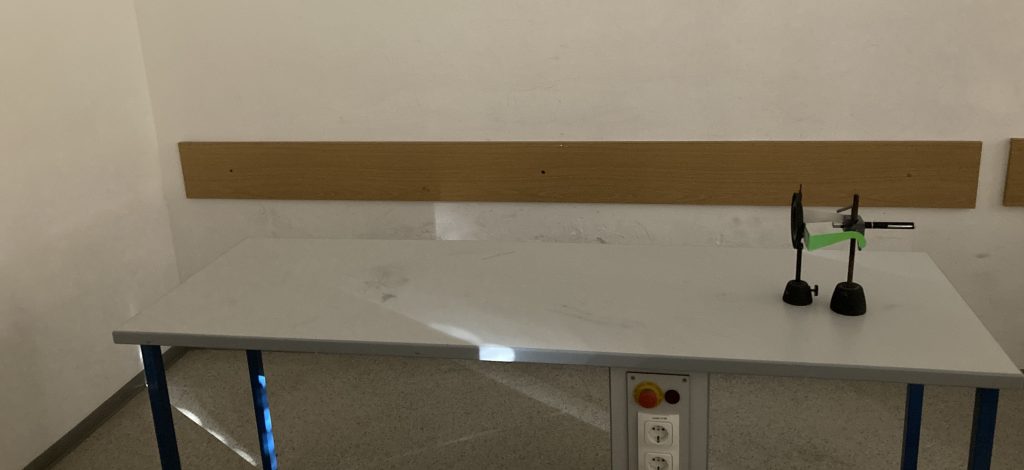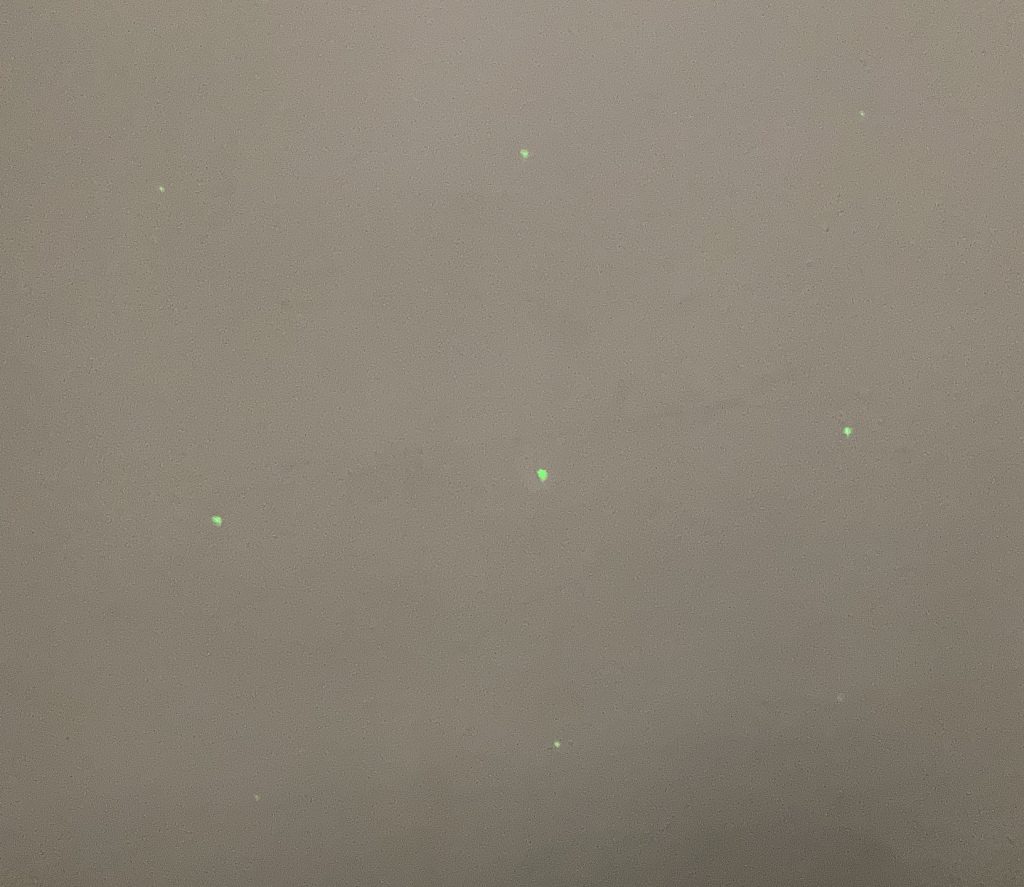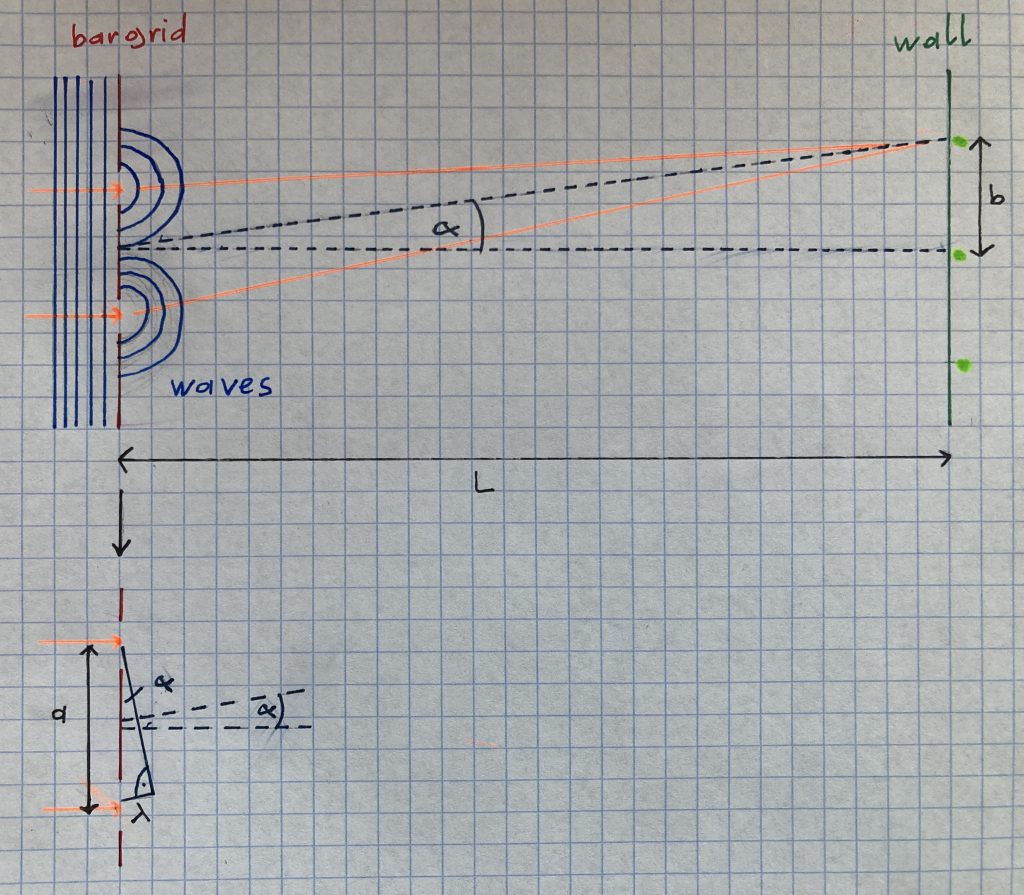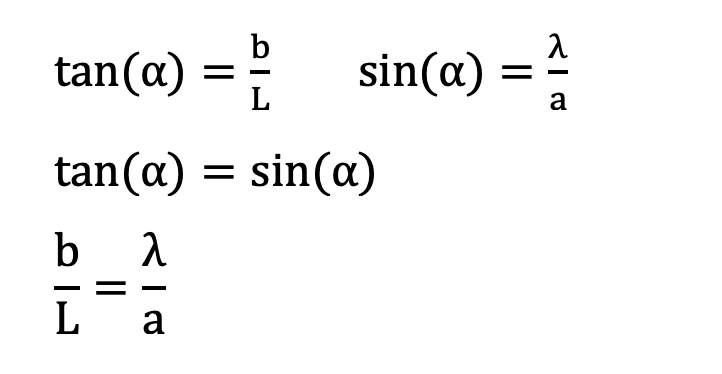written by Michael Himmelbauer
A usual laser pointer emits one ray, but nine can be seen on the wall after the ray passes a special optical instrument. What sounds to be impossible, can be realized with the help of some components that you may not have at home, but fortunately can be found in the physics room:
- a laser pointer (for example a green one)
- a bar grid
- two tripods
- for measuring: a measuring tape
First of all, you have to set up the components as shown in the picture, preferably in front of a white wall in a rather dark room.

When you switch on the laser pointer, you may be surprised by the fact that you can see nine rays on the wall, although only one ray is emitted by the laser pointer. At that point, you might want to ensure that it works properly, but please do NOT look directly into the light of the laser pointer for safety reasons (at least if you don’t want to damage your eyes forever).

Now you may ask yourself: Why’s that? Why can nine times as many rays be made out even if only one is emitted?
Therefore, we need to take a look at the structure of the bar grid. It consists of several lines into horizontal and vertical direction printed onto a disc of glass. The label „200 lines per millimeter“ means that there is a space of 0.000005 m between each of the lines.
For simplifying the process, we need to assume that the bar grid doesn’t feature several, but only two gaps (with the same width as above). When an electromagnetic wave passes these gaps, it turns from a straight to a circular wave. After that, the amplitudes of the waves interfere with each other, and those interferences are spread until they get to the wall. There, they are reflected and the light (again in the form of waves, but with a much lower density) gets to our eyes.
For illustration, I made a drawing to convey the theory:

The next question that comes to your mind might be: Can this theory also have benefits when using it in a practical way?
As a scientist, I say: Yes, it can. For instance, we can take usage of it when calculating the wavelength of a specific color (and that’s the reason why we conducted this experiment).
For simplification, we have to estimate that the sine of a small angle is has almost the same value as the tangent of the same angle (supported by the fact that for angles like that, the cosine is almost 1 and the tangent is calculated by the quotient of sine and cosine).
According to the drawing above, we can make up the following equations:

And as we are able to measure the distance from the tripod to the wall (2.08 m), the distance of the lines on the bar grid (0.000005 m) and the space between two points on the wall (0.225 m), we are able to do the following calculations easily:

That means that the light of the green laser pointer we used in the experiment has a wavelength of approximately 541 nanometers.
Another practical application of the effects of interference is used in clubs for the disco lights, featured with a small engine that slowly rotates the light emitting diode (LED). That is why some impressing patterns can be seen on the walls and on the ceiling.
To sum up, it can be mentioned that with the help of a laser pointer, a bar grid and two tripods, the wavelength of a specific color can be calculated and quite some things can be found out about the spreading of the electromagnetic waves that light up our everyday life.
source:
Putz, Bruno; Jahn, Brigitte: Faszination Physik 7 bis 8. Lehrplan 2018. Linz: Veritas-Verlag 2019, p. 68-69
fotocredit: (c) by Michael Himmelbauer
